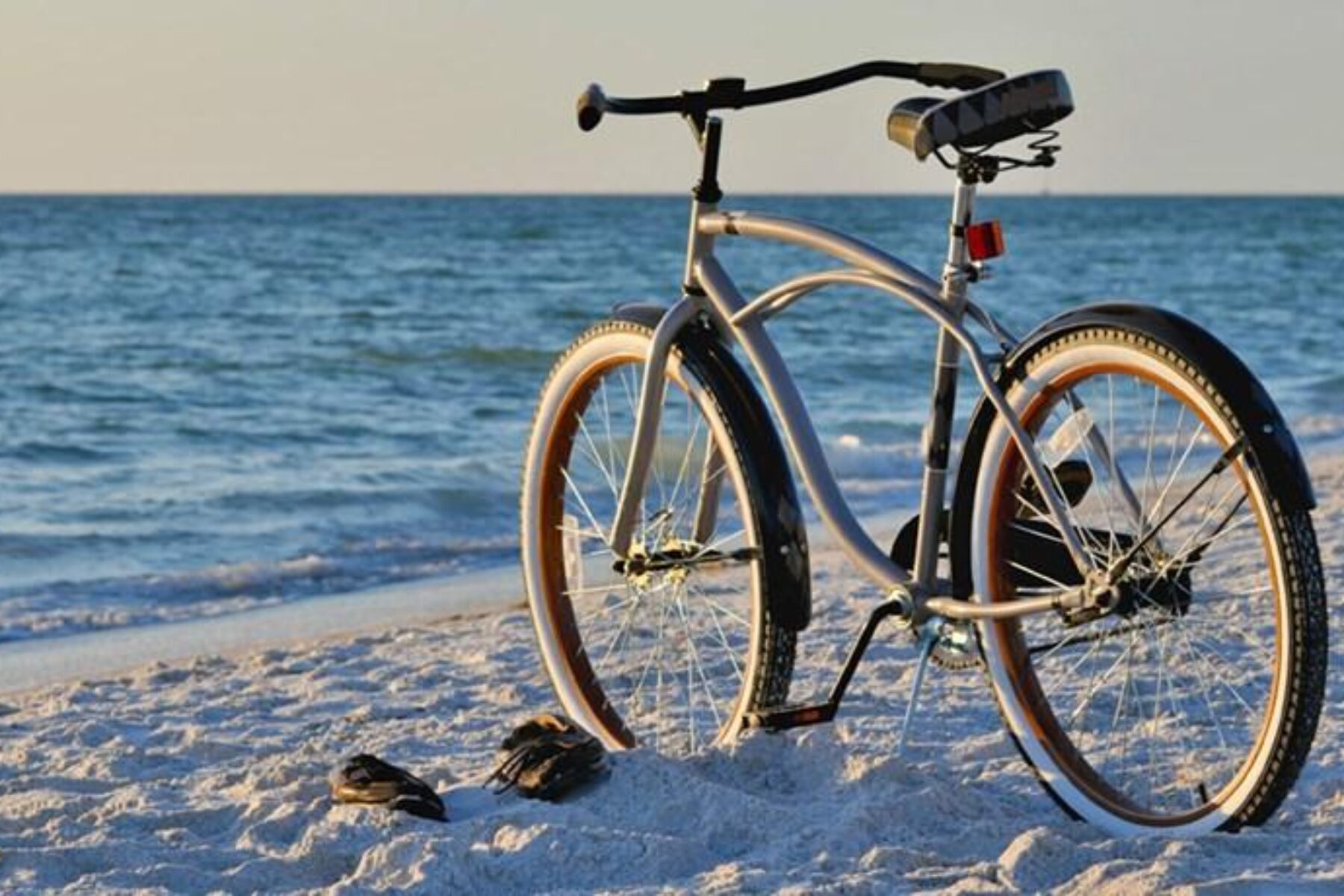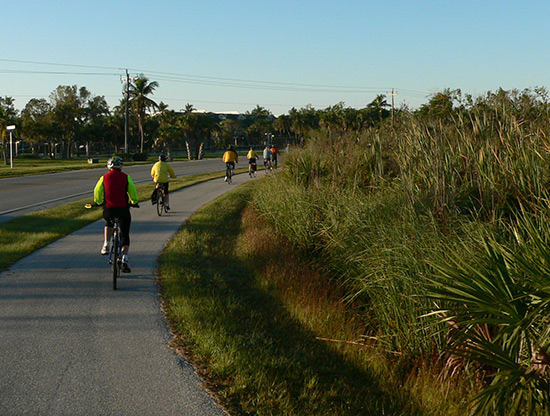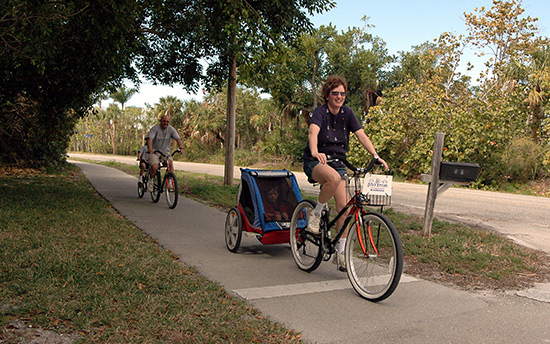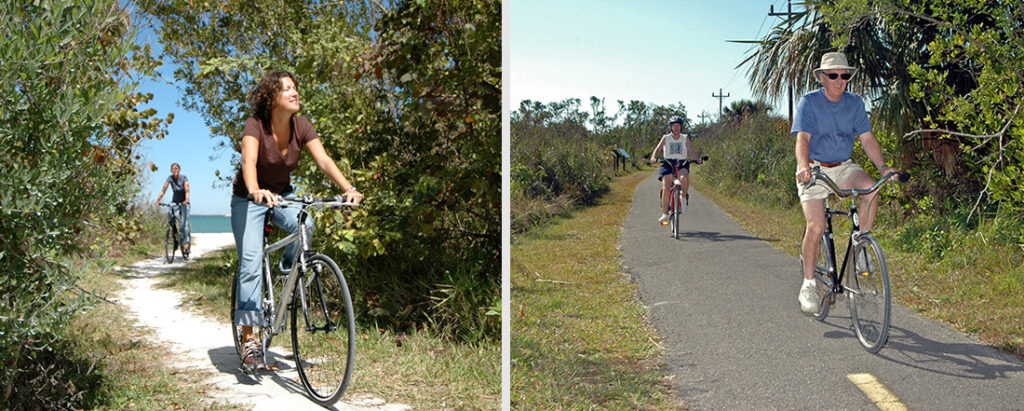Florida’s Sanibel Island Shared-Use Paths

Trail of the Month: June 2015
“It’s truly part of our transportation network.”
Sun, sea, and sandy beaches: Florida’s Sanibel Island is a summer sanctuary. Better yet, the island’s extensive shared-use path system—totaling 24 paved miles—provides access to it all: beaches, a wildlife refuge and rehabilitation center, a historical lighthouse and village, a renowned seashell museum, restaurants, shops and just about everything else in this laid-back community on the Gulf Coast. It’s the type of place where nary a building stands taller than a palm tree, and many of the streets are named after types of shells or mariner terms like Anchor Drive and Captains Walk.

“I call it Mayberry by the Sea,” says Tom Sharbaugh of the idyllic City of Sanibel, which encompasses the entire island. “The focus is on the beach; it’s on nature; it’s on riding a bike, so a lot of families come here. And, if you live here, you never have to get in your car. You can cycle every place you want to go.”
Sharbaugh is an active member of the Sanibel Bicycle Club, which began two decades ago for social and recreational get-togethers and has evolved into an advocacy group for the trail and cycling. Recently, the club launched a well-received educational video to help both tourists and locals bike on the island safely.
“A ton of people come for vacation, and a lot of them live in places that aren’t so cycling friendly,” says Sharbaugh, noting that the peak tourist season typically runs from mid-January to late spring. “So it’s a big attraction for them to come here and rent bikes and get out on the trail. We have grandmas and grandpas and kids of all ages, so there’s a range of skillsets on the trail.”
Just this year, FamilyFun magazine ranked Sanibel as the number one tourist town for families in the country. But this is no Disney World. Nature takes center stage in this corner of Florida, and the island’s J.N. Ding Darling National Wildlife Refuge—perhaps second only to its beaches—is a main attraction. The massive refuge, sprawling over 6,400 acres, is part of the largest undeveloped mangrove ecosystem in the United States and offers unparalleled opportunities for viewing wildlife, including alligators, bobcats, river otters, turtles and more than 245 species of birds. The paved pathway leads to its doorstep, and then visitors can bike through the refuge with an on-road route, or opt for a hike or explorations by kayak or canoe.

“We’re an extremely environmentally conscious community,” says Judie Zimomra, Sanibel’s city manager. “Nearly 70 percent of the island is set aside in perpetuity for environmental conservation.”
Salli Kirkland, who co-owns an island bike shop called Billy’s Rentals with her husband, agrees. “The city wrote up a plan to keep development to a minimum. There are no bright lights here, no neon. We don’t even have traffic lights. You can see the stars at night.”
The Kirklands started their bike rental shop just off the bike path 15 years ago, and Salli says business has continued to grow every year. “Because it’s an island, the roads can get congested,” she says. “You can actually get to places faster by bike, and almost every business has bike racks.”
The vision for the island’s pathways dates back to 1972, when four local housewives sought to create a way for their children to get to and from elementary school safely. A lack of sidewalks, coupled with narrow roads with no bike lanes or shoulders, made getting around by bike or foot nearly impossible. Together, Grace Whitehead, Mariel Goss, Sherry Vartdal and Starr Thomas formed the Sanibel Bike Path Committee and fundraised for the development of a new bike path. In 1976, thanks to their efforts, the first 2.5-mile section of the bike path was built along Periwinkle Way, the island’s main street.
Today, biking or walking to school, work or for other errands is safe, convenient and—due to the island’s flatness—very easy.

Today, biking or walking to school, work or for other errands is safe, convenient and—due to the island’s flatness—very easy. In 2014, the city was designated a bike-friendly community at the Silver Level by the League of American Bicyclists, a feat matched only by three other (much larger) Florida communities.
RELATED: Connecting the Keys: Florida Keys Overseas Heritage Trail
Zimomra notes that the city is continually improving and expanding on the network—investing more than $1.1 million into the path system since 2007—making it possible to now get from one end of the 12-mile island to the other entirely by bike. Numerous unpaved spurs also branch off its main paved spine to link to parks and other attractions; a new connection to popular Bowman’s Beach will begin construction this year.
“It’s truly part of our transportation network,” says Zimomra.

Donate
Everyone deserves access to safe ways to walk, bike, and be active outdoors.



